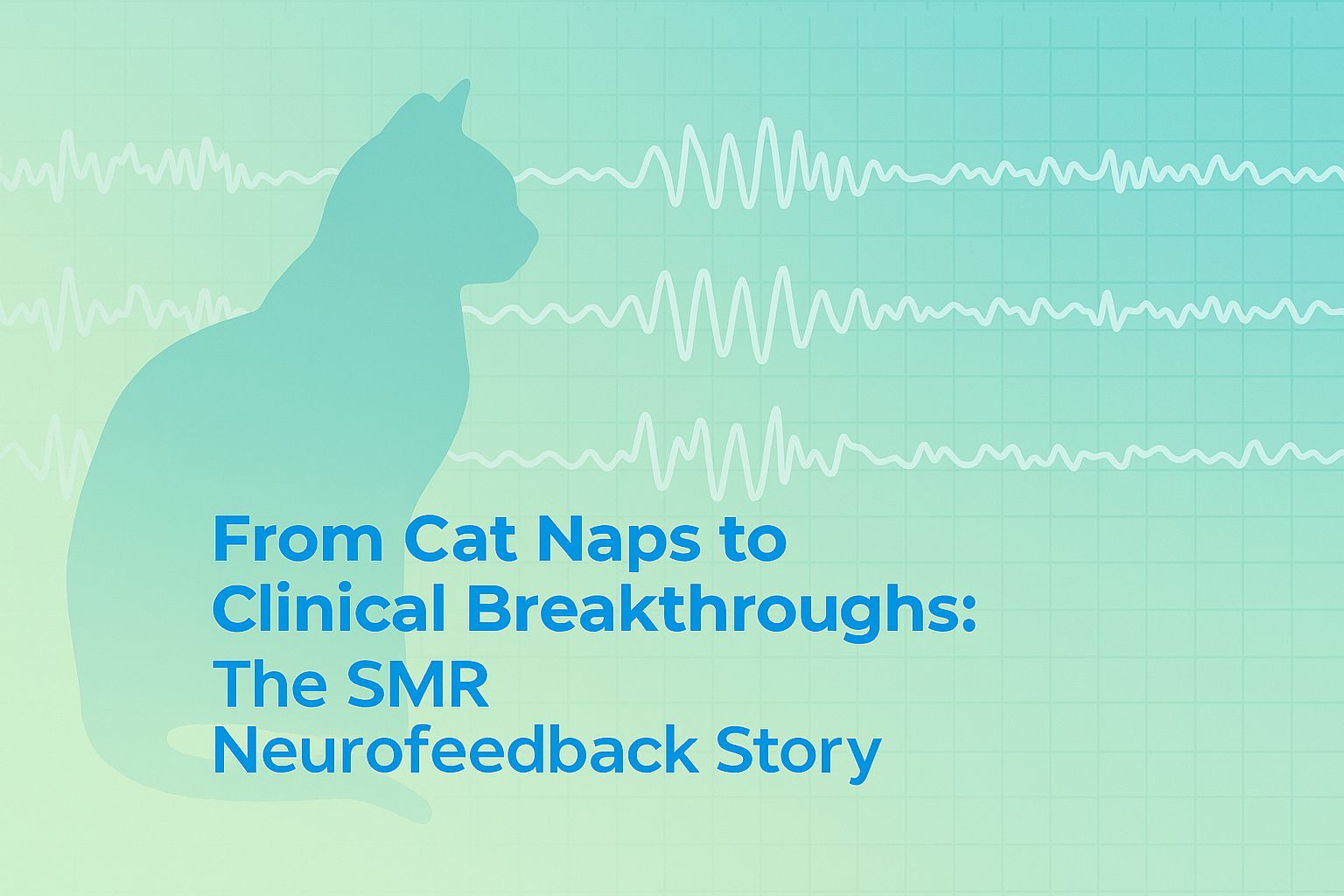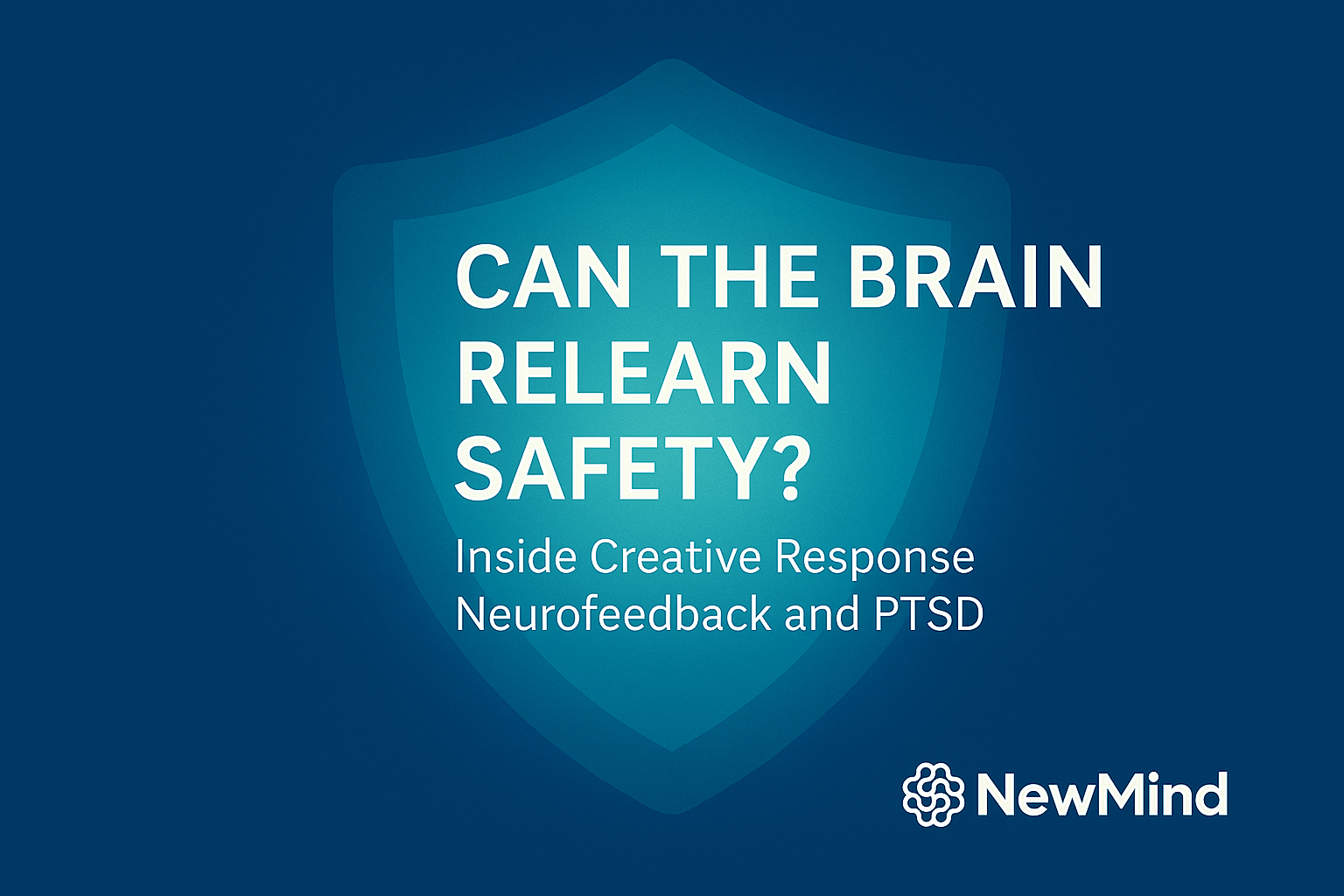The Importance of Training Sensory Motor Rhythm (SMR)

Ever since Barry Sterman’s groundbreaking research in EEG, training the Sensory Motor Rhythm (SMR) has received significant attention in neurofeedback research for over 50 years. There’s good reason for that steady interest. Extensive research demonstrates SMR training’s effectiveness with various disorders, including ADHD, seizures, fibromyalgia, chronic fatigue, Parkinson’s disease, stroke, traumatic brain injury (TBI), and sleep disorders. The application to sleep issues aligns naturally with Sterman’s original studies involving cats and sleep patterns.
Initially, the broad application of SMR training might appear suspiciously like a cure-all, but a closer examination of Sterman’s research and subsequent studies shows the opposite. His meticulous experiments at UCLA proved beyond doubt that mammals, including humans, could be operantly conditioned to modify brain wave patterns. The effects were so robust that conditioned subjects showed significantly increased resistance to lethal toxins. Further replicated studies solidified SMR neurofeedback’s efficacy in reducing seizures, even among individuals who did not respond to medication.
Sterman and those who followed in his footsteps pursued a behavioral intervention that delivered results previously confined to medicine. This blurred the lines between medicine and psychology. However, the psychiatric community at the time overlooked this opportunity, fascinated instead by the rapid advancements in psychoactive drugs and the prestige they brought psychiatrists.
Today, neurofeedback continues gaining recognition in both clinical applications and research. Interestingly, medical imaging researchers are now exploring similar neurofeedback concepts using fMRI, suggesting a medicalization of neurofeedback. This shift highlights the enduring impact and legitimacy of Sterman’s foundational work and the ongoing contributions of the neurofeedback community.
The SMR frequencies Sterman trained were typically between 13-15 Hz. Regarding optimal training locations, Sterman’s research showed that for seizure disorders, it was generally most effective to train at the motor strip rather than the seizure origination site, often found in the temporal lobe. Through detailed discussions with Sterman, I confirmed this important, yet frequently overlooked, insight: location matters, but the identified anatomical problem area isn’t always the best training site.
Some experts now suggest that regions of interest (ROIs) exist within broader networks, meaning training must account for the entire network. Training specific locations can produce widespread and sometimes unexpected brain effects. However, even today, network identification and its functions remain relatively new. NewMind adopted an alternative, non-anatomical approach, statistically identifying the most deviant EEG locations and advocating for training these areas toward normative functioning. This approach’s effectiveness is empirically validated using trend screens and ongoing symptom assessments.
Sterman’s findings were further explored and expanded by pioneers such as Margaret Ayers, Joel & Judith Lubar, Michael Tansey, and Sue & Siegfried Othmer. The Othmers, in particular, significantly influenced the early field. Sue Othmer explored training different sensorimotor cortex areas for various disorders, combining frequency training methods inspired by Sterman’s arousal theory. These methods included enhancing beta frequencies in the left hemisphere to improve cognition, followed by SMR enhancement in the right hemisphere to manage emotional functions. Simultaneously training frequencies up while decreasing theta and inhibiting high-beta frequencies proved notably effective, demonstrating early recognition of asymmetry and multi-frequency training.
Today, the neurofeedback field continues to introduce novel theories, procedures, and technologies. While these innovations generate excitement and impressive speculation, they frequently lack sufficient empirical backing. Renowned researchers like Martin Arns, Corey Hammond, and Rob Coben emphasize that few contemporary technologies meet Sterman’s research standards, hindering broader acceptance. Excessive technological complexity without robust research can overwhelm new clinicians who initially see neurofeedback as an adjunctive practice. Ongoing studies repeatedly highlight the efficacy and simplicity of Sterman’s original SMR protocol, reaffirming the principle that simpler solutions are often the best.
NewMind continues the legacy of Sterman’s principles by offering thoroughly researched, high-quality neurofeedback protocols. Incorporating insights from Sterman, the Othmers, Lubars, and Elsa Baehr’s investigations into asymmetry training, NewMind’s protocols reflect decades of clinical application in numerous clinics nationwide. By employing strategic qEEG analysis, location statistics, careful symptom tracking, and trend analysis, NewMind delivers clinicians straightforward, reliable, and effective protocols for lasting symptom relief.
Interested in bringing the proven effectiveness of Sensory Motor Rhythm (SMR) neurofeedback into your practice? Contact us today to learn more about NewMind’s evidence-based protocols and training programs.

Dr. Richard Soutar
Dr. Richard Soutar is a pioneer in the field of neurofeedback, with over 25 years of experience in research, clinical practice, and education. He has published five books on neurofeedback and has lectured and conducted workshops across the U.S. and Europe. In addition to owning and operating multiple neurofeedback clinics, he has served as President of the Neurofeedback Division of the AAPB. Currently, he is the co-owner and Director of Research & Development at NewMind Technologies, which operates one of the world’s largest qEEG databases. NewMind provides cutting-edge neurofeedback equipment, software, and training to make neurofeedback more accessible to clinicians worldwide.



